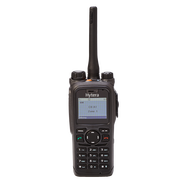Background
Indonesia's first Mass Rapid Transit (MRT) line began operational service on 24 March 2019 in the capital Jakarta. MRT Jakarta Line 1 Phase One is designed to help ease congestion in Jakarta, which has a population of 10 million people and is underserved by current public transport facilities. Construction began in 2013 and was completed in February 2019. PT Mass Rapid Transit Jakarta (PTMRTJ) is the operator of the transit system.
Phase One of the Red Line, as Line 1 is known, runs north to south and connects Lebak Bulus to Bundaran HI. The line is 15.7 km long and consists of 13 stations (seven elevated stations and six underground stations). Line 1 carries 212,000 passengers per day, but capacity is expected to rise to a maximum of 960,000 per day.
The Challenge
The main challenge on the communications side was to provide a robust radio system capable of providing mission critical levels of robustness, reliability and availability.
It is vitally important that the ability to make instant push-to-talk, individual, group and broadcast calls is available at all times to ensure clear communications between the train driver, the operations control room, station and platform staff and potentially with engineering and maintenance crews.
The trains travel at 80km/h on the elevated sections and 100km/h in the tunnels. The radio system needed to be able to provide a seamless handover of voice and data transmissions at these speeds. It also needed to have the capacity to handle the peaks in traffic when the train enters or leaves the station, as there is a sharp increase in communications traffic at these points.
The Solution
Hytera, in partnership with NEC, was chosen as the communications solution provider. Hytera is experienced in implementing communication systems in the transportation sector, in particular metro networks.
Hytera supplied its mature Metro Communication Solution, which was tailored to the PT MRTJ's exact requirements, including ensuring the TETRA system was compatible with other system in the project. Metro communication systems require a policy of 'no single point of failure', so Hytera's TETRA design solution built in redundancy at different levels, including backup application systems, databases, switches and redundant links between base stations and core switches.
The trunked radio system was implemented using Hytera DIB-R5 base stations and TS9200 bidirectional amplifiers. Hytera supplied CZT842 mobile radios for the trains and PT580H Plus handheld terminals for MRT staff. The PT580H Plus radios have a powerful 3W transmit power and noise cancelling technology making them ideal for use in noisy rail environments. The radios are IP68 rated for resistance to dust and moisture ingress. The GPS function enables the precise position of the radio to be pinpointed by the control room.
The radios also come with worker safety features including lone worker alert, man down alarm and emergency alarm features. Specific status messages can be sent and received remotely and over-theair programming (OTAP) enables remote software and firmware upgrades and troubleshooting.
The Results
The Hytera TETRA radio system has proven to be a reliable communications system with no single point failure thanks to both local and geographical redundancy of both hardware and software elements. Hytera's modular design means it is easy to add new features and expand the network if required.
The radio network provides efficient communications thanks to the centralized computer aided dispatch (CAD) solution. The TETRA system delivers high speed communications and the capacity to cope with heavy traffic loads.
During the final testing period, Mr. Yanto Yulianto, Department Head of Signaling, Telecommunication & IT, PT MRTJ, reported that the working relationship between the PT MRTJ project team and Hytera and NEC was good and that there were no complaints from the client.
Voice from Customers
“Honestly speaking, I can say that so far personally I am satisfied with Hytera for its technical support. Hytera is able to coordinate directly with the project owner, which is very good for our project because we can go directly to the manufacturer and the manufacturer can also meet directly with the project owner.”
——Mr. Yanto Yulianto, Department Head of Signaling, Telecommunication & IT



